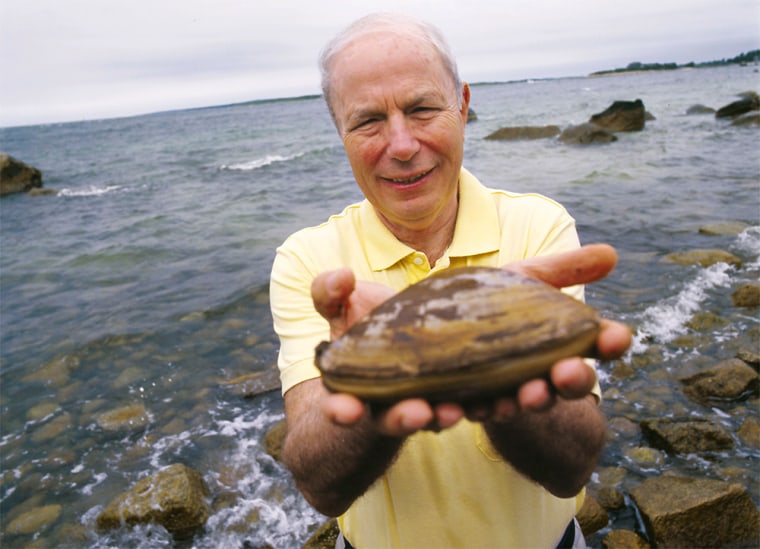Clams are the star ingredient in New England’s signature chowder, but an international team of scientists is proving there’s more to region’s famous mollusks than how they taste with boiled potatoes in a buttery broth.
The scientists, including a 2004 Nobel Prize winner, have been studying the common surf clam at the Marine Biological Laboratory in Woods Hole, hoping it can help reveal secrets about human disease.
The clam eggs are the key. They give scientists an extraordinarily good look at a process that’s fundamental to living organisms, from baker’s yeast to humans: cell division. When things go wrong in cell division, it can cause disease.
If researchers in the so-called “Clam Project” can learn enough about clam genes to link them to human genes, their observations of normal and abnormal clam cell division can also be compared with humans. That’s a vital first step in using the clam to discover the root causes of baffling human ailments, including cancer, muscular dystrophy, premature aging and diabetes.
“That’s the bottleneck right now,” said Robert Palazzo, chair of the biology department at Rensselaer Polytechnic Institute. “If you identify the genes at work in clams, you can translate that to another system.”
Meeting of the minds
The Woods Hole lab is a meeting place for some of biology’s most brilliant minds. The sand and sea off this beautiful coastal tract are secondary to the abundant sea animals, such as squids and clams, that are invaluable to research.
A primary job of the Clam Project is identifying the roughly 12,000 to 20,000 genes in the clam (compared to about 26,000 in humans) which Palazzo describes as a simple matter of time and money, neither of which is guaranteed. The foundational step of mapping out the genes in a clam is still a long way from curing disease.
“This is the way progress is made,” said Robert Goldman, a biologist at Northwestern. “I’m not going to see cures for diseases quickly.”
75 years of study
Surf clams have been studied for at least 75 years, Goldman said. Each day divers deliver the clams to the lab after digging them from the sandy ocean floors where they bury themselves.
Not only is cell replication in a surf clam egg unusually easy to observe, the process happens extremely quickly — occurring in 20 to 30 minutes. Just a few clams can provide billions of eggs, and, perhaps most significantly, the eggs move through cell replication at the same time, if triggered simultaneously. That allows researchers to more easily observe cell replication at different stages, and try to learn what proteins and molecules play what roles in the process.
“If we understand the process of cell replication, we can understand when there is a cancer, what went wrong,” Palazzo said.
When a cell divides, it usually passes on identical genetic information to the new cell. If it does not, a “genetic instability” is created, and that’s seen as a route to cell mutations and disease.
Complex quest for cures
Finding mutated molecules and associating them with disease is extremely complex. Even if researchers can make a link, the path to a cure is long and winding. For instance, a single mutated molecule in one cell might cause cancer in one person, but a different molecule might cause the cancer in another person, Palazzo said. So different treatments would have to be devised to attack the same disease.
“The molecular basis for disease might be variable,” Palazzo said. “We’re trying to understand all the molecules involved.”
Assuming the Clam Project can map all the genes in a clam, years of painstaking observation and experimentation are ahead to study cell mutations and apply that knowledge to fight human disease.
Drug companies on the case
Drug companies are already targeting problem molecules for disease treatments, based on previous research. The more Clam Project researchers can expand that list of targeted molecules, the quicker the treatments will come.
“It’ll take a long time,” Palazzo said. “Without the target, there’s infinity. With the target, there’s hope.”
Besides Goldman and Palazzo, the Clam Project team includes Yosef Gruenbaum of Hebrew University of Jerusalem and Avram Hershko of Technion-Israel Institute of Technology.
Hershko was co-winner of the 2004 Nobel Prize in chemistry for helping discover a key way cells destroy unwanted proteins — a breakthrough that could lead to new disease-destroying medicines. Since 1991, he has been a summer researcher at the Woods Hole lab.
